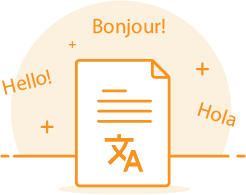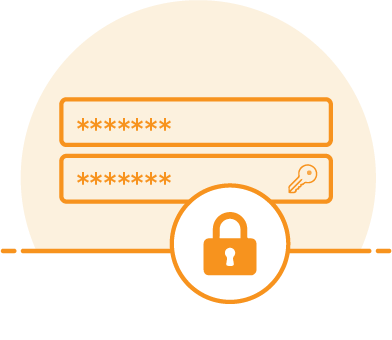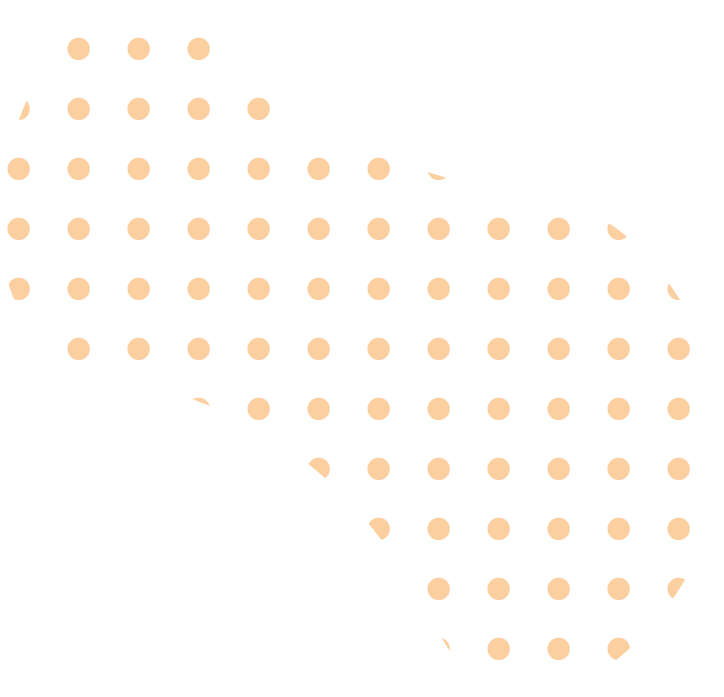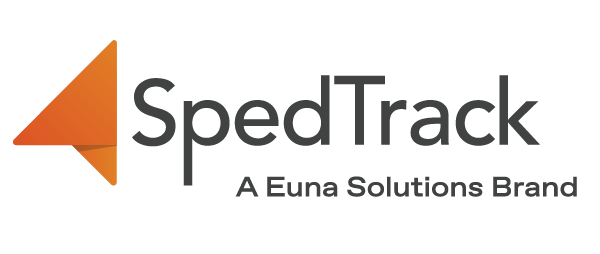The Individuals with Disabilities Education Act
The Individuals with Disabilities Education Act is a federal law that outlines practices for educational institutions to follow to ensure students are receiving a free appropriate public education (FAPE).
It originated as Public Law 94-142, which is a critical piece of legislation that provides them with the necessary legal foundations for providing quality instruction to students with disabilities. The law outlines specific requirements that must be met in order for schools to receive federal funding and provide services to disabled children. This includes developing Individualized Education Plans (IEPs) for students, creating a safe learning environment and providing appropriate accommodations.
A court case in the recent years, Endrew F v Douglas County School District, helped further clarify provisions of this federal law. It outlined the meaning of educational benefit, and it also stated that IEP goals should be appropriately ambitious and challenging for students. This caused schools to be more careful to track student data and implement progress monitoring to ensure a student’s progress on their IEP goals.
School districts are now needing to track data that documents that students are receiving the appropriate amount of services to meet those IEP goals and receive the maximum educational benefit.
Perez v Sturgis Public Schools Background
Miguel Luna Perez was a student in Sturgis Public Schools in Michigan for eleven years. He is a deaf individual, which qualifies him as an individual with a disability according to the thirteen areas of eligibility under the Individuals with Disabilities Education Act (IDEA).
Due to Perez’s disability, he required the accommodation of sign language instruction to receive the proper instruction to succeed in school. Perez filed a lawsuit against Sturgis Public Schools (Perez v Sturgis Public Schools) claiming that the school denied him the right to a free appropriate public education (FAPE).
The guidelines for a free appropriate public education are that the student be given access to an education that would allow them to progress alongside their similar-age peers. This provision of the Individuals with Disabilities Education Act requires that students receive their accommodations, modifications, or special education services in the least restrictive environment at no cost to the student.
Perez stated that the school district failed to abide by these federal laws because they provided him with unqualified sign language interpreters and misrepresented his academic progress. He had some sign language instruction from interpreters who were improperly educated, and he even had sign language interpreters who would be absent from the classroom for extensive periods of time, causing Perez to fall behind.
Sturgis Public Schools also gave the illusion that Perez was progressing toward receiving his high school diploma and Perez found out just months before graduation that he would be ineligible.
The school district agreed to provide relief in the form of sending Perez to the Michigan School for the Deaf to complete his primary education. Unfortunately, he has been set back enough in his education that it spilled over into what could have been his secondary education or career.
What Was the Source of the Problem?
The goal of every school district is to provide a free appropriate education to all their students and set them up for success after they finish their primary education. Sometimes things fall through the cracks, and districts unknowingly face difficulties with this, leading to issues such as this lawsuit.
Many districts are seeking relief to properly track the accommodations, modifications, and special education services that their students are receiving. It can be tedious and time consuming, and it also is difficult to track uniformly across all disabled students.
Every student has a unique plan to receive a free appropriate education that best fits their individual needs. In the case of Perez, he had a sign language interpreter that would join him in the regular education classroom to translate for him. Another student, however, may need to leave the regular education classroom and go to a special education classroom for an hour each day. It can be difficult to track those student’s services in a single area that is visible to the special education directors of the district.
Ruling Outcome & The Implications of it
The courts ruled in favor of Miguel Perez in the lawsuit, determining that the school did not provide him with a free appropriate public education. The school district is paying for him to finish his high school education at the Michigan School for the Deaf. This will allow him to catch up with the curriculum and move him forward toward receiving his high school diploma.
Unfortunately, this ruling was made after Perez was projected to finish high school. This set him back tremendously and, as his lawyer stated, this “permanently stunted Miguel’s ability to communicate with the outside world.”
This case has made other districts around the nation more susceptible to facing similar lawsuits or being challenged by parents. School districts are now needing to ensure that proper documentation is on file for students receiving services as a preventative measure.
What are Schools Doing to Increase Transparency?
Many schools are searching for an easier solution to use for tracking the services they provide to their students. SpedTrack offers an easy-to-use Services Tracking module that ensures districts are providing the services owed to students. The solution also helps rapidly identify underserved students so that you can stay in compliance and fix the errors quickly.
Perez v Sturgis Public Schools has caused tension in schools as they are realizing the weight of tracking their students’ services and progress. Schools are wanting to give their students the most quality education possible and are now seeing how easily something can slip by unnoticed.
With the goal of every school to give proper educational benefit to students, they are wanting to find a solution that can meet their needs without putting too much on their teachers. They also want to increase the transparency that they are giving to parents and special education directors to show that their students are receiving the services they need.
Tracking Services in Special Education
You may be wondering how services tracking could actually help a situation like this or function to where it is preventative of these circumstances. Services tracking is a great way to keep record of the services for students if a lawsuit like this one were to come up.
By documenting the services that you provide, you can hold that as evidence of fully carrying out the duty of providing educational benefit to students according to federal law. The more specific you are with your entries, the more reliable that data is going to be.
When recording services, we recommend that you give these details:
- What services are being provided (i.e. one-on-one ELL with instructor)
- The date and time that the services were provided
- The amount of time services are supposed to be provided for that date
- The service provider name
- Any information indicating why a student may have missed services for a day (i.e. Marsha was home sick the entire day on September 5, 2022, and the missed service times are excused).
By doing this, you are opening the doors to visibility within your school system to ensure that no child is being underserved. It gives peace of mind to parents and special educators in knowing that everything is compliant, and the child is receiving the best care possible. In the situation of Perez v Sturgis Public Schools, this issue could have been resolved very quickly had there been administrative processes of tracking services in the school.
Easily Track Services with SpedTrack
SpedTrack’s services tracking solution provides clear dashboards that give easy insight into services provided for students. You can see both individual students and multiple students in groups on the dashboard and know if they are on track or falling out of compliance.
The dashboard helps you to quickly identify students that are not receiving all of the services they need and fix the issue immediately.

Once you click into a specific student, it is easy to see the details of the student service record. The grid to the left gives a high-level overview of whether the service minute goals have been met, excused or missed. This allows educators to then dive deeper to look at where services have been missed, why they were missed and either excuse them or make them up.
These features help schools to easily stay in compliance a remove the guesswork around whether a student has been served the appropriate amount or not. These reports can also be easily presented to those questioning the matter.

Many special education teachers have different preferences for collecting service minute data. Because there is not a uniform consensus from teachers about which method works best, we have decided to provide three different options to collect data.
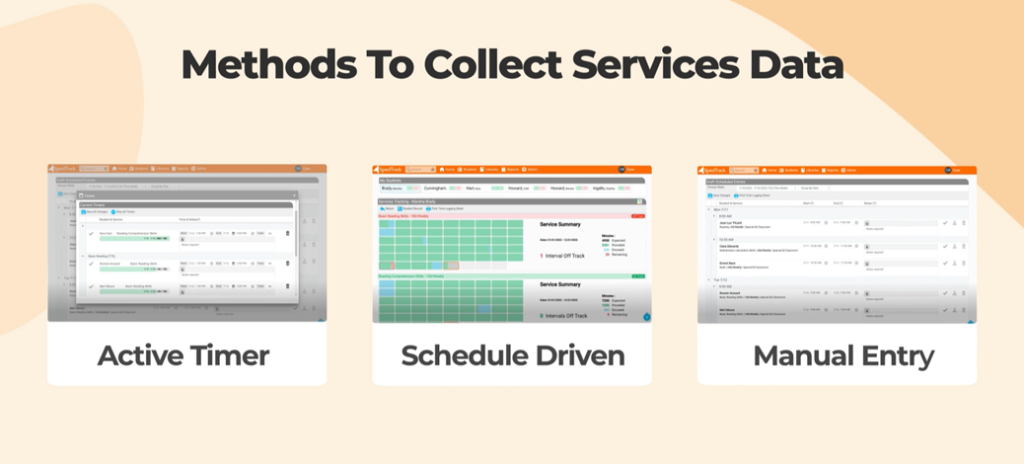
The active timer is a simple option that allows teachers to simply go to the timer for a student and hit start when the student begins receiving services for that day and stop when the services are finished.
Schedule driven is for those special education teachers that like to plan ahead and avoid the manual data entry that others might prefer. This gives you the liberty to create your service schedules ahead of time and create repeatable processes that can be adjusted as needed.
The final option is manual data entry. This is a traditional approach where educators can enter the service times manually each time they are provided.
All these options can accommodate the needs of the educators and make the data collection process much easier, giving them time back in their day. It also reduces the stress that can be put on special educators and directors to create their own tracking system.
Request a demo today with SpedTrack to dive deeper into the system and see how this solution can revolutionize the way you track your special education services!







